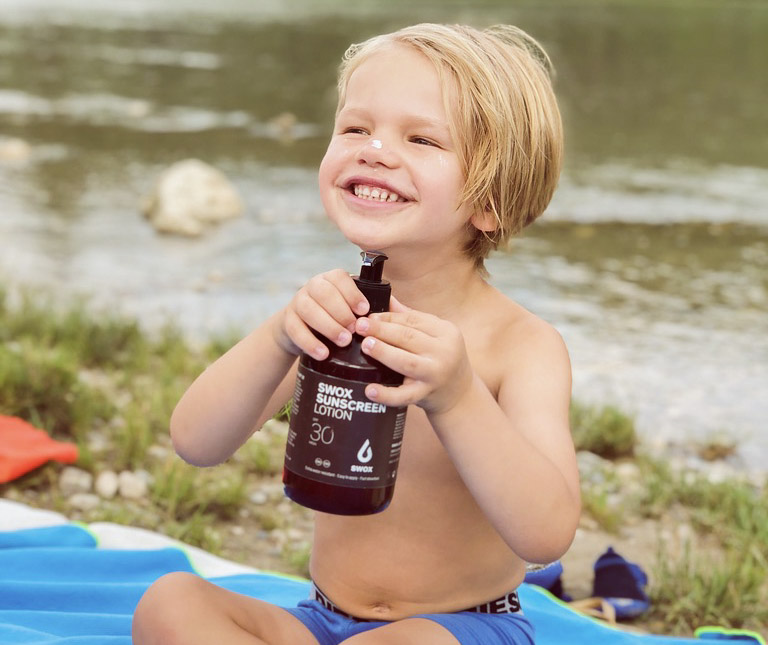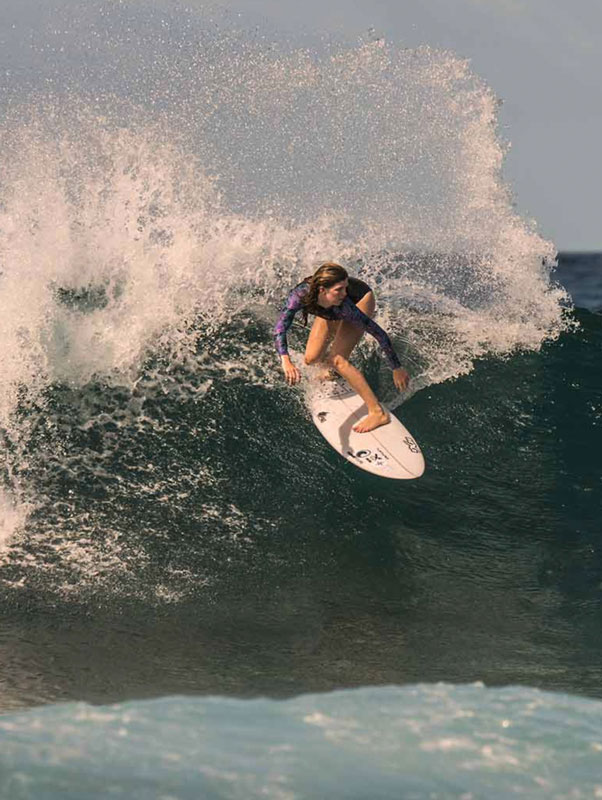SWOX® SKIN PROTECTION
FOR ACTIVE PEOPLE.
SWOX products combine modern UV filters and natural, non-allergenic ingredients to offer the best protection for outdoor athletes like you.
Our products are developed in collaboration with dermatologists, scientists and world-class outdoor athletes. We know that surfers, mountain bikers, runners, beach volleyballers, snowboarders and skiers place high demands on their sunscreen. And we know that parents want only the best quality sun protection for their kids.
That is why it’s part of our philosophy at SWOX to ensure that our products are very water resistant, have a high sun protection factor and do not make your eyes sting. Our gentle formulas are suitable for sensitive skin, made with mineral sun filters and eco-friendly, organic and sustainable ingredients.
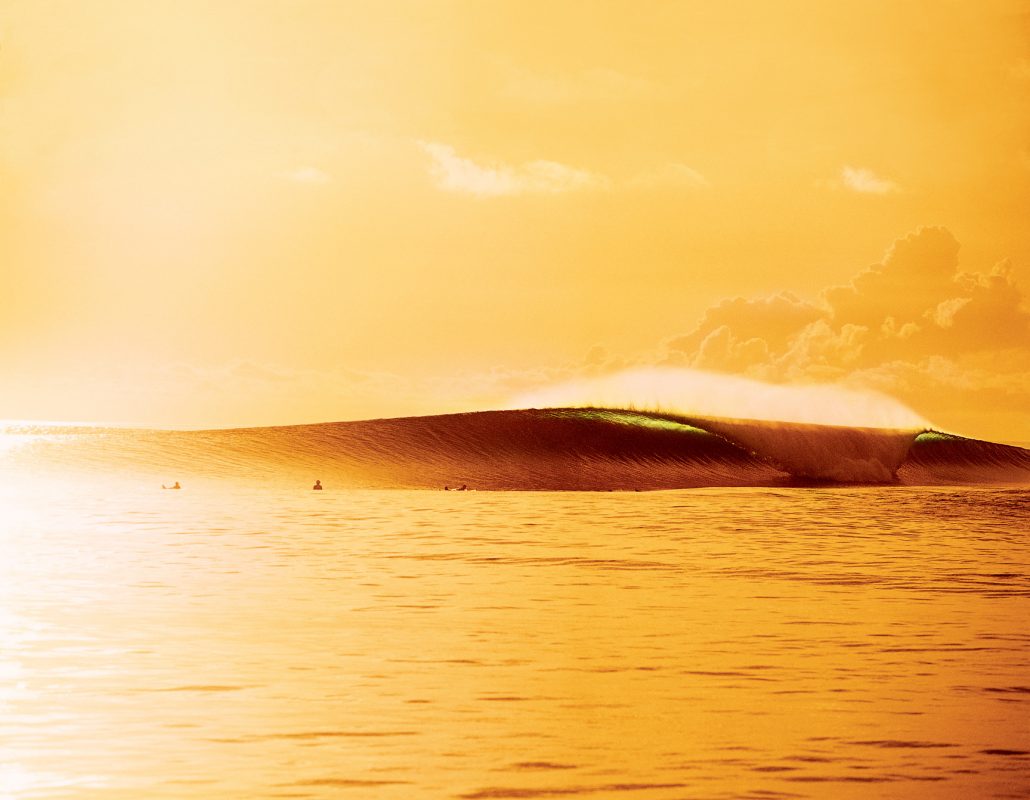
Natural
AND SUSTAINABLE
PROTECTION.
It has always been our mission to make sun protection and skin care natural and sustainable. Our blog #SWOXIMPACT offers inspirational content about how we can reduce our impact both as brands and as individuals.
We’ve already reached our first milestones when it comes to sustainability. Our packaging is made from recycled and recyclable materials and our formulas rely on reef-safe UV filters and certified organic ingredients. We use mineral UV filters for our very water-resistant sports sunscreens. Our products are produced entirely in Europe to minimize delivery distances. The SWOX Impact Blog is packed with the latest sustainability advice and success stories from our athletes.
Jordy Smith:
“
PROFESSIONAL
sun protection
is ESSENTIAL
for my sport
”
Take it from World Surf League pro surfer Jordy Smith: “For me personally, professional sun protection is essential for my sport. I surf four, five or six hours a day. I’m not just exposed to the sun, but also to salt water and nature’s elements. If there is one thing I can rely on, it’s SWOX. Their mineral sports sunscreen is really waterproof, so I can surf long sessions and just concentrate on my sport without having to worry about getting sunburned –– day after day, week after week. I want to be able to surf at this level for more than just a couple of years –– I want to do this sport for the rest of my life. That’s only possible if I take good care of my skin. ”
THE SWOX
STORY
It all began in the water, during a surf trip in Australia. Three friends and surfers from Germany, Tim, Ralph and Max, couldn’t find a sunscreen on the market that would give them the high level of protection and performance they needed to protect themselves from the elements while surfing.
ONLY
A SURFER
KNOWS
THE FEELING
“The classic saying, “only a surfer knows the feeling”, also rings true in that moment when you come up from a duck dive and you want to paddle straight for the next wave, but your sunscreen is burning your eyes”, says Max. “Stinging eyes, slippery hands, rashes from sweat mixed and sun lotion…everyone who is active outdoors knows what that feels like!”

As luck would have it, together the three surf nomads had the perfect skill set to take matters into their own hands, so they created their own start-up sunscreen brand.
As a medical professional in Australia, Tim Peltz had the necessary knowledge in dermatology. With his experience as a designer, Ralph Kenke created the product design and brand identity. And Maximilian Jagsch’s business background enabled him to set up a supply chain source and develop a marketing strategy for SWOX.
It was especially important to the three entrepreneurs to create a sunscreen product that was extremely waterproof and did not use any unnecessary chemicals which could cause skin irritation, like perfumes, or that could be harmful to humans or the environment. They kept their formula to the essentials for high sun protection and water resistance voilà –– SWOX was born.
PROTECT
YOUR FACE.
The first SWOX product on the market was a mineral zinc cream. This very water-resistant face sunscreen with a high sun protection factor (SPF) is still available today. The hypoallergenic formula is free from parabens, alcohol and perfumes and comes in an eco-friendly packaging.
It didn’t take long for word to spread about the new sunscreen made just for surfers. Finally, the days of stinging eyes and slippery hands were over! More importantly, it made it easier for surfers to prevent sunburn and reduce their risk of skin cancer and premature skin aging, even in the harsh conditions they face in the water.

The SWOX product line, produced entirely in Europe, soon gained the attention of other outdoor athletes: snowboarders, kiteboarders, windsurfers and skiers. Professional athletes were the first to try out the brand, since they were spending the most time in the sun, whether in the water or the mountains.
EXPERTS
ON BOARD.
In order to develop the product further using feedback from their sponsored pro team of surfers, windsurfers, kite surfers, snowboarders and skiers, Max and the SWOX team brought a world-renowned expert on board.
Uli Osterwalder is an engineer and one of the leading experts worldwide on sunscreen formulations and UV filters. He has been part of the SWOX team for over four years.
The Swiss expert has dedicated his life to researching and developing UV filters, sun protection factors and formulations. Uli Osterwalder has worked for international companies like Ciba, DSM and BAF. He has been on the board for the worldwide ISO standard for sun protection and regularly consults international organizations.
As a scientific consultant, Uli not only helps SWOX to keep up with the most recent standards in sun protection and cosmetics, but also to continuously think one step ahead. This became especially relevant when it was proven some years later that certain ingredients and UV filters in sunscreens were causing serious harm to coral reefs and other aquatic life.

REEF-SAFE
Harmful concentrations of sunscreen filters have been measured in areas where humans spend time near coral reefs, for example while swimming, snorkeling and, yes, surfing.
In response, Hawaii, Florida and certain regions in Australia and Mexico have issued a ban against cosmetics and sun protection products that contain UV filters which are proven to be harmful to coral reefs.
This currently applies for the substances oxybenzone, octinoxate und octocrylene. However, studies are already underway to test further ingredients which are also suspected to cause harm to reefs. The implications at SWOX are that all new product formulations will not only steer clear of the ingredients which have already been proven hazardous, but also those ingredients which are currently still considered as “reef-safe” but are also scientifically disputed. SWOX will continue to revise product formulations to reflect the most current scientific knowledge.
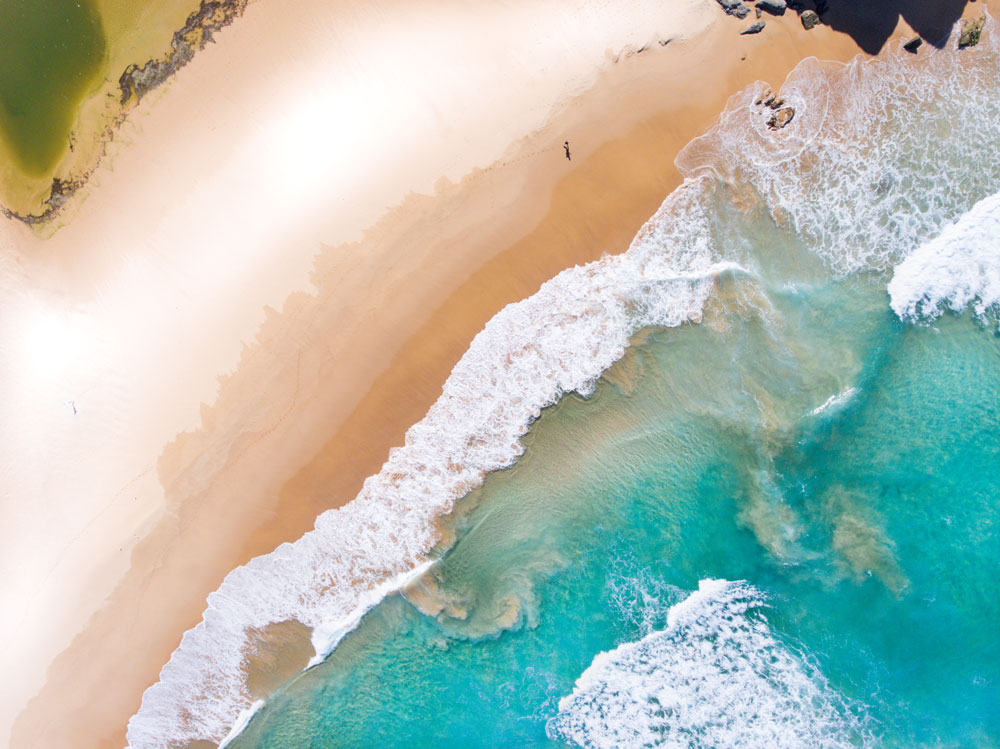
PROTECT
THE OCEAN
It’s crucial that we minimize the amount of sunscreen contaminating our oceans and harming sea life, without compromising life-saving protection from the sun for our skin and body.
To address this challenge, SWOX has integrated UV-protective clothing in its product line. T-shirts and tank tops with a high UV protection factor can help to keep the amount of sunscreen needed for water sports to a minimum. This was a logical next step for SWOX, as part of our commitment to the fight against skin cancer and for better environmental protection.
It wasn’t long before the SWOX tribe grew from a local team of national pro riders to a worldwide community of athletes and influencers providing feedback on products. Now, the SWOX pro team reads like the A-list of surfing: world-class surfers Jordy Smith and Wade Charmichael, kiteboarding world champions Mikaili Sol and Bruna Kajiya, windsurfing legend Victor Fernandez, pro mountain biker Steffi Marth, ultra-runners Martina Valmassoi and Fernanda Maciel and the surfer and model Imogen Caldwell, to name a few. They all use SWOX to help them excel in their sports and protect them in their day-to-day lives.
In 2020, SWOX started a new chapter and expanded its existing product portfolio –– the Classic Line and Organic Line –– with a line of premium skin care products using natural, organic ingredients. The Skin Care Line includes a day cream for the face and a lip balm with mineral sun protection, a regenerative Hydro Repair cream as well as an aloe vera after sun lotion with cell-regenerating properties.
TIME FOR ACTION.
When it comes to protecting the environment, ‘doing our best’ is not good enough. It’s time to go above and beyond.
As surfers, environmental sustainability has always been a core value for SWOX. All of our products are manufactured entirely in Europe according to the highest quality standards, minimizing the number of miles in our supply chain.
The SWOX Skin Care Line prioritizes natural, certified organic ingredients, making them especially suitable for sensitive skin. The product labels on our new SWOX products are printed on eco-friendly stone paper.
Our mineral sports sunscreen is available as a sports stick, sunscreen or lip balm and is free from endocrine disruptors, parabens, perfumes and alcohol. It does not contain oxybenzone, octocrylene and octinoxate and therefore classifies as “reef-safe”. Research on sunscreens is constantly evolving, due to continuous scientific research. SWOX formulations are continuously revised according to cutting-edge dermatological and scientific evidence.

SUSTAINABILITY
AND PACKAGING.
Choosing sustainable materials for our packaging is important to us. All classic SWOX tubes are made of I’m Green Plastic, manufactured from sugarcane.
Plastic produced from renewable sugarcane not only reduces the amount of CO2 emitted during the manufacturing process, but also captures carbon dioxide through the production of sugarcane. And as of 2020, all of our pump bottles for SWOX sunscreens and lotions are now made from 100% recycled plastic.
In addition to its organic sunscreens, mineral sports sunscreens, natural skin care products for athletes and environmentally friendly packaging, SWOX also runs a blog about sustainability, #SWOXIMPACT. There you can useful information on how to reduce your own impact, interesting stories about SWOX athletes taking action to protect the oceans, as well as the latest scientific research.

SWOX
PRODUCTS
Introducing the SWOX product line for 2020
OUR SYMBOLS EXPLAINED
Our individual sunscreens and packages have different symbols printed on to give you more orientation before your shopping. See all symbols explained in detailed below:
Stay Gold
The best surfers and outdoor athletes in the world trust SWOX sun protection. You too can go “pro” when it comes to protecting your skin! #StayGold
Ocean-Friendly Formula
As passionate surfers, we care about our oceans! We work with leading scientific experts in our field in order ensure that our products meet the highest standards in both sun protection and sustainability.
Natural Essential Oils
Essential oils have been used for thousands of years due to their positive effects on health and wellbeing. They help to protect and nourish your skin and their gentle scents make you feel refreshed and relaxed.
Modern UVA & UVB Filters
The newest generation of sun filters is guaranteed free from endocrine disruptors, according to strict standards from the European Commission. These UVA and UVB filters are easy to apply on large patches of skin. They are especially suitable for activities on land, such as mountain biking, running and beach volleyball.
Mineral UV FIlters only
Sunscreens with mineral filters form a protective shield on your skin. They are effective immediately after application, so you can get right to action! We use the most modern mineral filters that are much easier to apply, feel light on your skin and leave no white cast.
Long-term deep hydration
Sun, wind, water and cold temperatures dry out the skin. When your skin is dehydrated, it loses elasticity. Long-lasting, deep hydration is important before, during and after outdoor activities to keep your skin soft and healthy!
For sensitive skin
Sensitive skin needs natural protection. Our products are free from alcohol, perfumes, parabens and endocrine disruptors. They are hypoallergenic and contain natural ingredients. Perfect for kids!
For element-exposed skin
Nature’s harsh elements can leave your skin feeling irritated, tight, itchy or dry after outdoor sports. SWOX products give your skin plenty of hydration and care so you can keep doing what you love.
Coral reef-safe
It has been scientifically proven that high concentrations of certain chemicals found in sunscreens can harm coral reefs and other sealife. Our sunscreens do not contain any of these ingredients and we are committed to continuously revising our products according to the latest state of research.
Authorized travel size
Size matters, especially when you’re travelling! SWOX products come ideal sizes to fit in your beach bag, running pack, glove compartment or pocket.
For all outdoor activities
SWOX sun protection is made for athletes. Whether you prefer waves or wind in the water, rock or snow in the mountains, beach volleyball in the sand, or cycling or running on trail or asphalt –– SWOX products are very resistant to water and sweat. They feel light on your skin and are non-greasy.
100% natural organic formula
We think that both the environment and your skin deserve organic. Our 100% naturally organic formulas reflect this. It’s no coincidence that our organic Aloe Vera is sourced from our favourite place to surf in Europe – Portugal!
ALL ABOUT SUN PROTECTION
As a sunscreen manufacturer, we use a lot of specific terms here on our website and on our packaging. Maybe you’ve asked yourself before: What is the difference between UVA and UVB rays? What is the UV Index and why are mineral sunscreens recommended for sports? Here’s the lowdown.
What is the difference between UVA and UVB rays?
Let’s face it, the warm touch of the sun on our skin feels so good! There’s nothing like soaking up the first rays of sunshine after a long, cold winter. But those delicious rays actually contain two types of radiation harmful to human skin: UVA and UVB.
UVB rays contain more energy than UVA rays, but they only reach the upper layer of your skin, called the epidermis. They boost your vitamin D production and tan your skin. But they can also attack your pigment cells and cause sunburn or cause cancer in the skin cells of the epidermis.
UVA rays are less energetic than UVB rays, but they reach a deeper layer of the skin, called the dermis. They attack the elastic connective tissue of the skin and lead to premature skin aging, characterized by pigment spots and wrinkles. In high doses, they can also lead to sunburn and allergies. There is also evidence that they can contribute to the formation of skin cancer, also known as malignant melanoma. It is very important that you protect yourself from both UVA and UVB rays using a broad-spectrum sunscreen and UV-protective clothing.
What is the UV-index?
The Ultraviolet Index (UVI), or UV Index, is an international measure for the intensity of the midday sun. It was standardized by the World Health Organization (WHO) and the World Meteorological Organization (WMO).
Most weather reports also provide a daily UV Index measurement. The higher the UV Index, the faster sun damage is likely to occur. The UV Index varies depending on cloud cover, the height of the sun, the thickness of the ozone layer and the altitude of the location. The UV Index ranges from 0 (low) to 11 (extreme). Sun protection measures, such as wearing sunscreen and protective clothing, are recommended when the UV Index is 3 or higher. A UV Index higher than 5 is considered high intensity.

How do sun intensity and activity level affect the need for sun protection?
Have you ever noticed that it takes less time to get a sunburn in the water than on land? The reason for this is that the intensity of the UV rays is amplified when they get reflected. This occurs when you are next to or in water, but also in snow and white sand. The sun intensity differs depending on the weather, time of day, your geographic location and its altitude.
More UV radiation passes through the sky when it’s cloudy than on a bluebird day. Sun intensity is highest around midday, when the sun reaches its highest point in the sky. The closer you are to the equator, the higher the sun’s intensity. The intensity of the sun also increases with altitude.
The individual factors that contribute to the intensity of the sun depend on and reinforce each other. Your activity level also plays a role. How much time do you spend outside doing sports? It is important to ask yourself these questions when choosing the right sun protection. A lower sun protection might suffice for a short run under a cloudy European sky but would be a poor choice for long surfing sessions in Costa Rica, due to the difference in sun intensity.
What role does skin type play in choosing the right sunscreen?
Our skin type affects how sensitive we are to the sun. Already in the 1970s, six different skin types were defined, based on the skin’s self-protection time.
Self-protection time refers to the amount of time an individual with untanned skin can spend in the sun before their skin shows the first signs of sun damage. It is best to let a dermatologist determine your skin type as part of a yearly check-up.

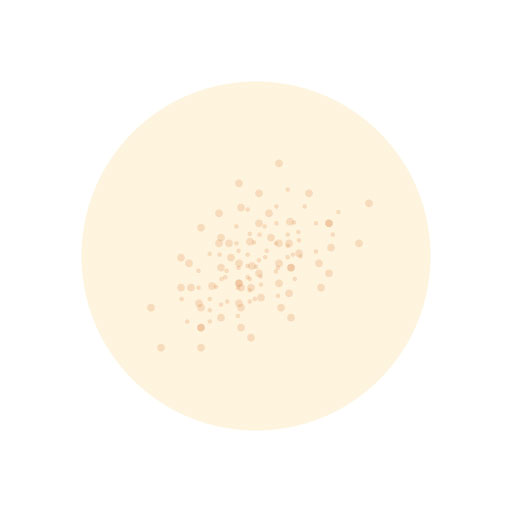
Skin type 1
(Self-protection time: approx. 10 minutes)
/ Very fair skin color and freckles
/ Red or blonde hair
/ Blue, green or light gray eyes
/ Never tans
/ Burns often and quickly
/ Very high skin cancer risk

Skin type 2
(Self-protection time: approx. 20 minutes)
/ Fair skin color, often with freckles
/ Blonde to light brown hair
/ Blue, gray or green eyes
/ Rarely tans
/ Burns often
/ High skin cancer risk

Skin type 3
(Self-protection time: approx. minutes)
/ Medium skin color with hardly any freckles
/ Dark blonde to dark brown hair
/ Brown, green or gray eyes
/ Tans slowly but steadily
/ Sometimes burns
/ Skin cancer risk

Skin type 4
(Self-protection time: approx. 40 minutes)
/ Brown or olive skin
/ Brown or black hair
/ Brown eyes
/ Tans quickly
/ Rarely burns
/ Low skin cancer risk

Skin type 5
(Self-protection time: approx. 60 minutes)
/ Light to dark brown skin (untanned)
/ Black hair
/ Brown eyes
/ Tans very quickly
/ Very rarely burns
/ Very low skin cancer risk

Skin type 6
(Self-protection time: approx. 80 minutes)
/ Dark brown to black skin
/ Black hair
/ Brown eyes
/ Tans very quickly
/ Almost never burns
/ Very low skin cancer risk
CHEMICAL AND
MINERAL UV FILTERS
Chemical filters in sunscreens are taken in by the skin, where they absorb UV rays by converting them into warmth. Chemical UV filters are also called organic filters. Mineral filters, often called physical sun blockers or inorganic sun filters, remain on the surface of your skin and physically reflect UV rays.
Both types of filters have different properties. That is why you should always think carefully about the type of activity and which part of your body you are choosing protection for.
Chemical filters are used in lotions, creams and sprays. They need to absorb into your skin, which can take up to 30 minutes. Once they have been absorbed, they are invisible. These filters enter the deepest layers of your skin and can therefore are enter your blood stream. Claims that chemical filters can act as hormones in your body are incorrect. Even the highest reasonable concentrations are far below the amount that would be necessary to achieve a hormonal effect. In Europe, this is regularly assessed by the European Commission.
SWOX lotions only use filters which are assessed by the European Commission as safe for human health, according to the latest standards.
The ongoing discussion about “reef-safe“ sunscreens specifically applies to certain chemical filters. Although they are not harmful to humans, scientific tests under laboratory conditions have shown that the organic UV filters oxybenzone, octocrylene and octinoxate are harmful to coral reefs and other aquatic life forms. SWOX does not use any of these three UV filters.
The advantage of chemical filters is that they can be used in lotions because they are very easy rub into the skin evenly. This is especially important for vulnerable skin types, who need to ensure that every last inch of skin gets good sunscreen coverage. Once absorbed into the skin, a high-quality sunscreen with chemical filters can be very resistant to water and sweat. We recommend using SWOX lotions and creams with chemical filters on larger areas of the body, as a day cream for your face and for those hard-to-reach areas during moderate outdoor activity (e.g. ears, neck, top of feet, etc.).
Sunscreen lotions with chemical filters are often accused of causing allergies. This is not true. Most skin reactions to lotions are caused by other ingredients, such as parabens, perfumes and alcohol. SWOX lotions do not contain any of these ingredients and are safe to use on sensitive skin.
Mineral sun protection substances are tiny –– unless you compare them to chemical filters, in which case they are very large –– particles of zinc oxide or titanium oxide pigments. In basic terms, they act like microscopic mirrors reflecting UV rays from your skin. They remain on the surface of your skin and are not absorbed into deeper layers. Mineral UV filters are commonly used in sunscreen sticks and creams.

MINERAL
FILTERS
The advantage of mineral filters is that they work immediately. There is no need to wait after applying them, so you can get straight to action.
Physical UV filters are ideal for sensitive skin and children, because they do not absorb beyond the surface of the skin. They are especially resistant to water and sweat, making them the perfect choice for water sports and outdoor activities.
A common perception of mineral filters is that they leave a white cast on your skin. This was true for the first generation of mineral sunscreens, but there has been a lot of development since then.

SWOX Zinc is also available in a smooth shade of beige that blends in with your skin tone instead of turning it pasty white. Plus, the new generation of mineral UV filters are much easier to apply than their earlier counterparts. They are more comfortable to wear and easy to spread across the skin. However, their slightly thicker consistency makes mineral sunscreens less suitable for application on larger areas of skin than chemical filters.
DEEP
HYDRATION
Even the most modern generation of mineral filters, such as those used in SWOX sunscreen, can’t quite compete with chemical filters when it comes to how easy they are to spread. They are best used on your face and to cover up the most exposed parts of your skin: cheeks, lips, tips of the ears, bridge of the nose, shoulders and scalp (if not protected by hair or headwear).
Naturally, mineral UV filters do not contain substances which are considered to harm coral reefs and can therefore be classified as “reef-safe” according to the latest scientific knowledge.
SUN PROTECTION
GUIDE
Surfers and other outdoor athletes place especially high demands on their sunscreen products. Water and sweat can reduce the performance of UV filters. This is why anyone who enjoys outdoor sports needs a very water resistant, sweat resistant and hypoallergenic mineral sunscreen for sports.
Sports sunscreens should absorb into the skin quickly to avoid slippery hands and stinging eyes. No one wants to be the kook that slipped on a take-off or flew over their handlebars. If you love the outdoors, chances are that you also care about the eco-friendliness and sustainability of the products you use. Here are our top four sun protection tips for surfers and outdoor lovers!
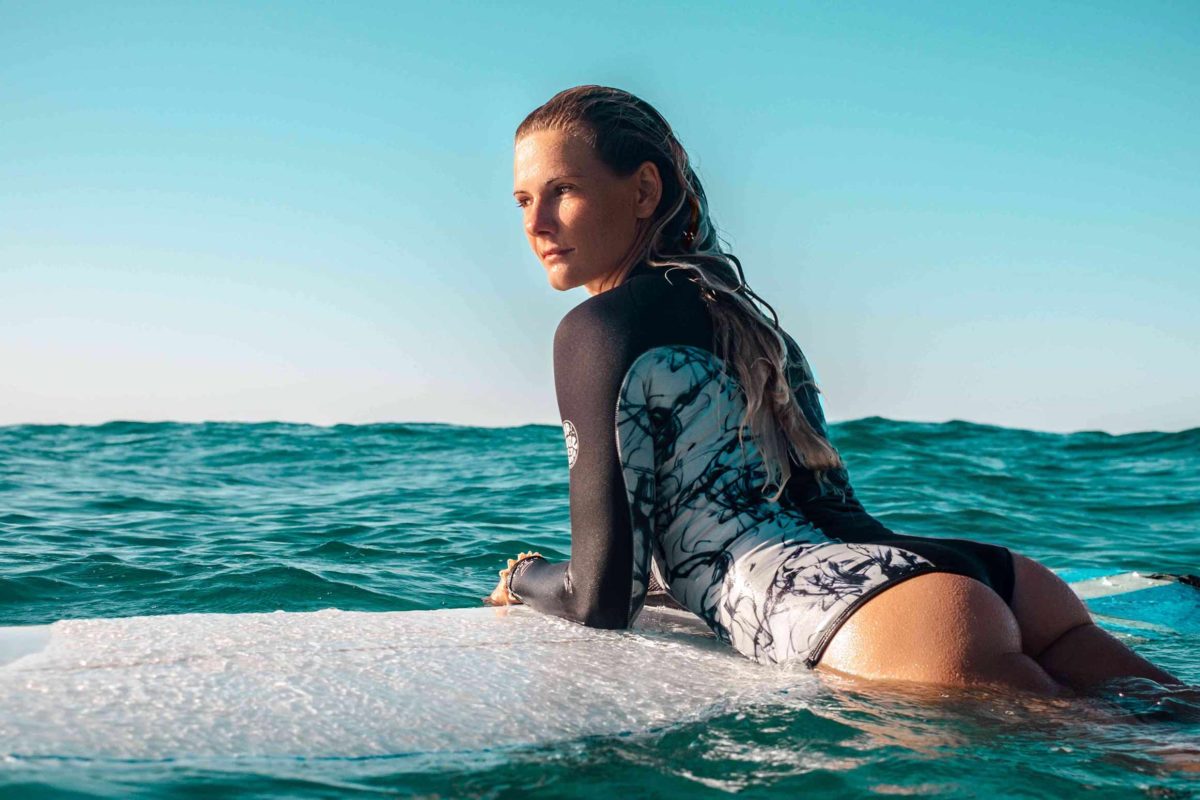
01
WATER-RESISTANT
SUNSCREEN
Ensure that your sunscreen is labelled ‘very water-resistant’
The terms ‘water-resistant’ and ‘very water-resistant’ are regulated by the European Trade Association for the cosmetic and personal care industry, COLIPA. Sunscreens can only be labelled as very water-resistant if at least half of their sun protection factor remains after four twenty-minute bathing sessions.
SWOX sunscreens not only fulfill this standard, but far exceed it. It is now known that certain ingredients in cosmetics (and likely many more) can cause harm to coral reefs and other aquatic life, making it even more preferable to choose a very water-resistant sunscreen in order to minimize the amount of product that washes off into the water.

02
SUN PROTECTION FACTOR
(SPF)
Choose a sunscreen with the appropriate sun protection factor
Whether you’re using a mineral sports sunblock or a sunscreen lotion, selecting the right sun protection factor is essential. The sun protection factor (SPF) indicates how well your sunscreen protects your skin from UV rays. In other terms, the SPF of your sunscreen tells you how long you can spend in the sun before getting the first signs of sunburn. SPF is not a minute value –– it’s a multiplying factor of the self-protection time of the skin. Depending on an individual’s skin type, their self-protection time may range from just a few minutes to over an hour. Consult your dermatologist for an accurate assessment of your skin type and get your skin checked once a year. Check the previous section, “All About Sun Protection“ to get a general idea of what your skin type might be.
03
THE
GOLDILOCKS PRINCIPLE
Use neither too little, nor too much sunscreen
It may sound confusing at first but let us explain. Test have shown that most people apply too little sunscreen –– up to a quarter or half of the necessary amount to gain adequate protection. The sun protection factor (SPF) of a sunscreen is only accurate when enough sunscreen has been applied, otherwise the level of protection is reduced significantly. But what is the recommended amount of sunscreen for your face and body? On average, adults needs five to six tablespoons of sunscreen to cover the entire body and at least one tablespoon for the face to achieve sufficient protection.
As a rule of thumb, you should re-apply sunscreen every two hours. You will need to re-apply even more frequently if you have been in the water or if your sunscreen may have been rubbed off by the sand, a towel or your clothes –– even if the sunscreen you are using is very water-resistant. It is important to understand that re-applying sunscreen helps to maintain your level of protection, but does not prolong it.
If you want to be as “reef-friendly” or “reef-safe” as possible and reduce the amount of sunscreen entering the ocean, wearing UV-protective clothing can help you to minimize the amount of sunscreen needed.

04
SENSITIVE
SKIN
Natural ingredients help to avoid skin irritations and allergies.
Outdoor athletes and sensitive skin types tend to prefer sunscreens that use natural ingredients. Skin that is prone to allergies and irritations requires gentle care. If you are prone to sun allergy, it is important to look for sunscreens that are free from parabens, perfumes and alcohol.
A hypoallergenic, non-greasy sunscreen is also ideal for sports that require grip on your board or handlebars. Not to mention that a light, non-oily lotion feels great on your skin.
If you prefer not to use chemical UV filters because they absorb into your skin, a mineral sports sunscreen is the best solution for you. The mineral UV filters zinc and titanium dioxide do not absorb into your skin. Instead, they work like tiny mirrors reflecting UV light from the skin’s surface. This makes mineral sunscreens especially suitable for sensitive skin.
05
SUSTAINABILITY
Choose a sunscreen brand that uses sustainable ingredients and packaging.
Protecting the ocean and its inhabitants is important to surfers, watersports athletes and beachgoers alike. Hawaii and other regions of the world have banned the UV filters oxybenzone and octinoxate, and all sunscreens containing them, due to evidence that some UV filters can be harmful to corals and other ocean life.
Global studies have shown that high concentrations of these substances contribute to coral bleaching and can harm other sea life.
Harmful concentrations of these UV filters occur especially in areas with a lot of human activity near coral reefs. The terms “reef-friendly” and “reef-safe” are not legally protected and can therefore be used somewhat arbitrarily. To be safe, check the ingredient label of your sunscreen.

Sustainable, eco-friendly packaging is also a good factor to consider when choosing the right brand of sunscreen. I’m green™ plastic is a more environmentally conscious alternative to regular plastic. It is made largely with renewable sugarcane instead of fossil fuels. This reduces overall CO2 emissions during the manufacturing process and also captures carbon dioxide from the atmosphere during sugarcane production. You can also buy sunscreens with packaging made from 100% recycled plastic, such as our SWOX sun lotion dispensers. Our sunscreens also use FSC-certified paper packaging and labels printed on renewable or recyclable materials.
SWOX FOR
SPORTS
Surfing, Biking, Running!
SURFING
Saltwater, sun, wind…surfing exposes you to the element like no other sport. You need a sunscreen that can withstand hour-long surf sessions.
To make it worse, your face and body are constantly in and out of the water, usually in warm to tropical regions near the equator. A very water-resistant mineral sports sunscreen is essential to have in your board bag –– ideally, a sunscreen that won’t sting your eyes or make your hands greasy and is truly “reef-safe”.

With his characteristic beard and affinity for barrels, Pro-surfer and SWOX athlete Wade Carmichael is used to hearing that he gets a little more sun protection than the rest. His humble, soft-spoken personality contrasts his powerful surfing and tube riding.
Wade Carmichael was Rookie of the Year in the 2018 World Surf League Tour (WSL). He finished ninth in 2019, his second tour year. That’s when he met SWOX co-founder Max in a bar and decided to join the SWOX pro team. “SWOX Zinc is the first thing I pack on my way to the beach,“ he explains, “I also like that SWOX works to reduce its climate impact by using packaging made from renewable materials”.
PERFECT
SUN PROTECTION
FOR SURFERS

BIKING
Whether you’re a road biker, mountain biker or a hobby cyclist, there’s nothing like exploring the world on two wheels on a clear, sunny day.
Depending on the weather, your face and often other parts of your body like your forearms and calves are exposed to the sun for long periods of time. Sun intensity increases with altitude, so it’s even stronger in the mountains. When you’re mountain biking or road biking, you usually sweat a lot, so you’ll need a sun protection that won’t run into your eyes and start to sting. When you’re on a bike, sunscreen in your eyes is not just inconvenient –– it can actually pose a serious safety risk.
Pro mountain biker and SWOX athlete Steffi Marth has won multiple German championships and been on several world cup podiums.
“Sun protection is really important to me since I spend all day outside in the mountains, where the sun is most intense. I personally have skin problems related to UV exposure, so I always include sun protection in my daily skin care routine.”
Steffi’s favorite everyday skin care product is the SWOX Daily Face Balm with a mineral UV filter and organic plant oils.


RUNNING
A challenge for runners when it comes to sun protection is finding a sweat-resistant sunscreen that doesn’t feel greasy.
The UV filters and ingredients in sunscreen for runners should be hypoallergenic, so that they do not cause skin irritations on sensitive skin or from sweating. Runners typically prefer a perfume-free sunscreen that doesn’t leave greasy sweat marks on clothing.
Ultra-runner and SWOX athlete Fernanda Maciel from Brazil uses the SWOX Sunscreen Lotion SPF 30. As a teenager, Fernanda already understood the importance of sunscreen: “When I was 15, the mother of a good friend of mine told me: Fernanda, if you don’t want to look old, you have to put sunscreen on your face and hands every day. I’ve followed her advice ever since!”
BABIES & KIDS
SUN PROTECTION
Babies and children should avoid sun exposure as much as possible. Especially babies less than a year old should always be kept away from direct sun.
Midday sun is a no-go. The best protection from the sun for kids is shade, UV-protective clothing, sun hats and sunglasses. Sunscreen is essential for play time outdoors, even in the shade.
Please consult a pediatrician to find out when it is safe for your child to use sunscreen. For older babies and children, use a hypoallergenic sunscreen with a high sun protection factor. SWOX mineral sports sunscreen is very waterproof and does not contain perfumes, parabens or endocrine disruptors, making it a safe and effective choice of sun protection for kids.
